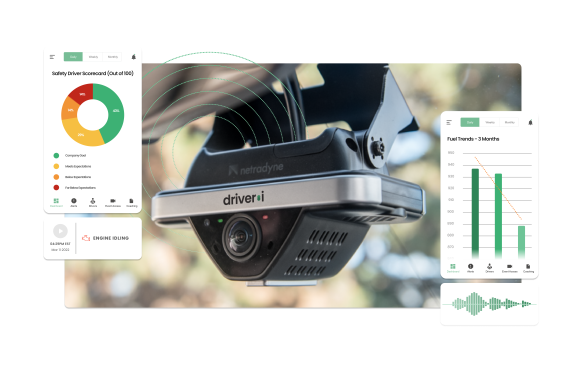The value of tech-enabled companies is coming into focus as several American unicorns test the public markets. The data show that some venture-backed companies often grouped with technology companies are worth just a fraction of their tech-first cousins.
By tech-enabled business, we mean a company that has a technology element to its operations but doesn’t generate the sort of high-margin or recurring revenue that tech companies are famous for today, especially in the software market.
The impact of this increasingly clear divergence in how companies are valued will continue to shake out over the next few years as some of the hundreds of private unicorns attempt to go public. Today, with new information from Casper and its fellow unicorn One Medical — not to mention some historical data from flops like Blue Apron, WeWork and others — we can begin to piece together an understanding of what counts as tech, what doesn’t and the value delta between them.
Two companies, two prices
Picking fresh ground as our starting point, One Medical is hoping to best its private valuation in its IPO, while Casper is not.
As a quick refresher, One Medical is currently targeting a valuation between $1.71 billion and $1.96 billion in its IPO. Its final, formal private market valuation was reported to be $1.5 billion. The company was also said to have traded for as much as $2 billion on secondary exchanges.
Casper, in contrast, is targeting a valuation of $666 million to $714 million, sharply under its final private valuation of $1.1 billion (per Crunchbase data) set during its most recent funding round, a $100 million investment.
The two companies are therefore shooting for very different valuation targets. One, a markup and the other, a markdown. Here’s how they stack up (using provided metrics when possible to avoid differences in rounding conventions and the like):
- One Medical YoY rev growth: 32-35%
- Casper YoY rev growth: 23% at midpoint
- One Medical 2019 gross margin: 39-40%
- Casper 2019 gross margin: 48.7%-49.3%
- One Medical 2019 operating loss as % of revenue: 16%-23%
- Casper 2019 net loss as % of revenue: ~21%, calculated by TechCrunch using midpoints
So, One Medical is growing more quickly, has worse margins and an operating loss as a percent of revenue that is roughly commensurate to Casper’s net loss as a percent of revenue. Note that we’ve used net loss in one case and operating loss in the other, as that’s the information we could glean from the IPO filings.
In contrast, Casper is growing more slowly, has better margins and an operating loss that roughly stacks up to what One Medical has on a net basis.
If you had to guess, would you wager that they were aiming for similar revenue multiples? That each, for every dollar of revenue they bring in, creates the same amount of value? If so, you’re off the mark.
One Medical is shooting for a revenue multiple in the 6-7x range. Casper, in contrast, is currently targeting a multiple of around 1.5x.
Why the differential?
What gives? It’s hard to say. Perhaps one of the two companies is mispriced (Casper is priced similarly on a revenue-multiple basis to a public peer, making it unlikely to be the culprit). One Medical’s growth rate is superior, but it feels unlikely that that differential itself makes the company worth four times as much on a revenue-multiple basis, especially when the revenue generated sports lower gross margins.
The only other element I can ferret out is that One Medical does have a minority (in percent of revenue terms) recurring income stream, namely its membership fees. Perhaps the combination of a faster growth rate and some recurring revenue is the differentiator?
If One Medical prices where it hopes, we’ll have a pretty good signal from the market that growth and recurring incomes are worth more than we thought. Bear in mind that One Medical is targeting a lower-tier SaaS multiple without the commensurate SaaS economics. Precisely why investors would value it there is hard to understand; that said, the market knows best.
As a final bit of context here, software shop Atlassian grew 39% last quarter, compared to the year-ago period. That’s similar to our two companies. Its revenue multiple? Over 27x, per Yahoo Finance. And SaaS and cloud stocks are, as a group, trading at over 12x.
We can therefore see the low, the middle, the high and stratosphere when it comes to striated revenue multiples, starting with Casper, moving to One Medical, then SaaS and finally Atlassian on top. Comp your own portfolio accordingly.
How this applies to other unicorns
What we can learn from this is that there are likely ceilings to the value of revenue generated by venture-backed (but not-quite-tech) companies that will matter. Bird, Lime and other companies with similar economics that lack a recurring model (some on-demand companies offer packages of services for recurring sums, but I’ve never seen data or even heard a whisper that such items are material revenue drivers; we can discount them for now) are effectively spending heavily to stack up revenue that might wind up looking like Casper’s own, provided their margins are as good. Which I doubt.
Sure, they are probably growing more quickly, but it seems that the lesson that Blue Apron kicked off in mid-2017 with its disastrous IPO is now better understood. WeWork was probably another directional indication that public-market investors weren’t about to be fooled by other companies trying to paint themselves as technology shops.
Which brings us back to One Medical’s stated goal: “To transform healthcare for all through a human-centered, technology-powered model.” How much of that investors wind up agreeing with could explain the gap between its hoped-for revenue multiple and what Casper is targeting.






